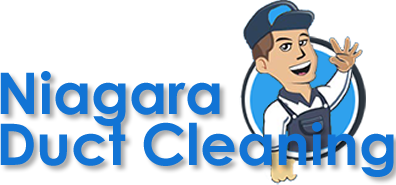Duct cleaning has become popular in recent years, with commercial cleaning services popping up everywhere. But is the service worth it, or is it a scam? Here’s some information to help you decide whether or not your home might benefit from having the HVAC ducts in your house cleaned.
Duct Cleaning Services
Professional duct cleaning services use specialized blowers, vacuums, and brushes to clean out the supply, intake, and return ducts throughout your home. Duct cleaning should also involve a thorough cleaning of the air handler, registers, grilles, fans, motors, housings, and coils of the HVAC system.
There’s no research at present proving that routine duct cleaning improves the air quality or reduces dust in your home. There is, however, evidence that dirty heating and cooling coils, motors, and air handling units can make your HVAC unit less efficient.
While duct cleaning alone doesn’t seem that necessary, there are cases where cleaning the HVAC unit and ductwork could be useful.
Floor duct with cover grate removed.
Ducts in your home may be dirty and need cleaning after remodeling.
Should I Have Ducts Cleaned?
Due to growing concerns about indoor air quality, it’s easy to convince homeowners that their ducts need cleaning. But unless ducts are really dirty, there’s no reason to clean them. The EPA takes a similar stance on the issue, recommending cleaning only if the ducts and HVAC unit are contaminated.
If done properly, duct cleaning doesn’t hurt; but it’s not something that needs to be on your regular home maintenance list. You probably don’t need to have your ducts and HVAC system cleaned unless:
Renovation: If your home has been remodeled – especially if there was asbestos abatement, lead paint removal, or significant dust – your ductwork may need to be cleaned. Ducts should be sealed off during home renovations; but if they weren’t, dangerous dust and debris may become lodged inside the ductwork.
Animals: If there’s evidence of animal infestation or nesting in your ducts or HVAC system, have the animals removed then clean the ductwork and HVAC unit.
Mold: If there is visible mold growth inside the ductwork, the ducts and HVAC system should be cleaned.
Contaminants: If noticeable debris, pet hair, odors, or other contaminants are being released into the room through the ducts after the registers have been cleaned and vacuumed; then the ducts may need to be cleaned. Illness: If someone in your family is suffering from an unexplained allergy-related illness, and you’ve taken every other possible step to decontaminate your home, you may want to consider having your ducts cleaned to see if the HVAC system was the culprit.
Duct inside a HVAC unit.
The entire HVAC heating/cooling system should be inspected and cleaned as well.
How To Avoid Duct Cleaning Scams
While there are reputable, professional HVAC cleaning services out there, there are scams as well. Anytime scare tactics can be used to make the claim that your home might be “unhealthy,” homeowners run the risk of being frightened into emptying their checkbooks.
Here are some tips for avoiding scams if you decide to look into having the ducts and HVAC system in your home cleaned:
Full Service: Don’t settle for just duct cleaning, make sure the cleaning service is also going to do a full cleaning of the heating/cooling unit.
References: Get and check references in your area to find out what was provided for the money, and whether customers were satisfied.
Estimates: Ask for written estimates from at least three HVAC cleaning services. A reputable company should provide a free inspection and estimate.
Avoid Gimmicks: Ads for “$79 whole-house specials” are scams. At most a few ducts will get a very cursory vacuum; and at worst, you’ll end up talked into a much more expensive package. High-quality duct and HVAC cleaning should cost upwards of $500, take several hours with sophisticated equipment, and involve multiple workers.
Floor duct cover
Verify results after cleaning.
Certifications: The cleaning company should be certified by the National Air Duct Cleaners Association (NADCA), which sets standards for HVAC system cleaning. The EPA does not certify duct cleaners, so avoid anyone making that claim. Check for relevant licenses and insurance – some states require a license for duct cleaning while others don’t.
Check Standards: The NADCA provides guidelines for professionals and customers on safe duct cleaning. If your ducts are insulated, the professional should also follow the guidelines of the North American Insulation Manufacturers Association (NAIMA).
Verify Results: You should be offered a complete visual inspection of the HVAC system and ductwork, either in person or by remote camera. Make sure every single duct is clean, and insist on an inspection of the inside of the HVAC unit, before paying for the service.
Don’t Get Fooled: Keep in mind that intake ducts (room ducts that return air to the heating/cooling unit) are likely to be dirtier than supply ducts (which deliver conditioned air from the HVAC unit), since they often don’t have filters. Make sure any “before-and-after” photos are of the supply ducts, where it’s most important that the air is clean.
Avoid Sealants and Sprays: Both the EPA and the NADCA recommend against the use of sprayed sealants or other potentially harmful chemicals inside air ducts. Biocides and anti-microbial treatments are also iffy, since the chemicals may cause more harm than good to your health. No chemicals are currently registered with the EPA for use inside ductwork.
Avoid Steam Cleaning: Any kind of duct cleaning involving steam or moisture should be avoided.
